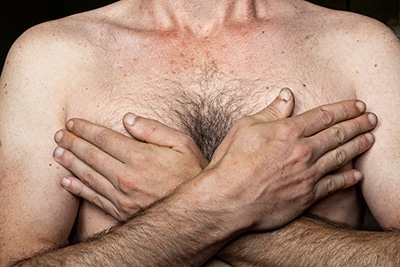After Losing Weight, Why Do Men Still Have Breasts?

Weight loss is often celebrated as a significant achievement, promoting overall health and well-being. However, some men find themselves facing a perplexing issue even after shedding excess pounds – persistent male breast enlargement, a condition known as gynecomastia. In this comprehensive exploration, we delve into the reasons behind male breast enlargement, the role of hormonal imbalance, and the intricate relationship between weight loss and gynecomastia.
Understanding Gynecomastia
Gynecomastia, characterized by the enlargement of male breast tissue, is a condition that affects men of all ages. While it is not uncommon during puberty due to hormonal fluctuations, the persistence of gynecomastia beyond adolescence can be a cause for concern. The condition can be caused by various factors, and one of the primary contributors is hormonal imbalance.
The Role of Hormonal Imbalance
Hormones play a crucial role in maintaining the delicate balance of the body’s physiological functions. In the context of gynecomastia, an imbalance between testosterone and estrogen levels is often implicated. Testosterone is the male sex hormone responsible for the development of masculine traits, while estrogen is typically associated with female characteristics.
In cases of gynecomastia, there may be an increase in estrogen levels, a decrease in testosterone levels, or a combination of both. This hormonal imbalance can lead to the development of glandular breast tissue in men, resulting in the appearance of male breasts.
Weight Loss and Gynecomastia
Weight loss is generally celebrated for its positive impact on health and appearance. However, for some men, the journey of losing weight may not completely eliminate the issue of enlarged breasts. This lingering problem can be particularly frustrating and may lead individuals to question the effectiveness of their weight loss efforts.
Several factors contribute to the persistence of gynecomastia after weight loss. One key factor is the distribution of fat in the body. When men lose weight, the body tends to shed fat from various areas, but the distribution may not be uniform. The stubborn fat deposits in the chest region may remain despite overall weight loss, contributing to the appearance of male breasts.
Moreover, hormonal changes associated with weight loss can also impact gynecomastia. As the body undergoes changes in fat distribution, hormonal fluctuations may occur, influencing the delicate balance between testosterone and estrogen. These hormonal shifts can affect the glandular tissue in the breast, further exacerbating the condition.
Treatment Options for Persistent Gynecomastia
For individuals experiencing persistent gynecomastia after weight loss, various treatment options are available. Understanding the root cause, whether it be hormonal imbalance or excess glandular tissue, is crucial in determining the most effective approach.
Hormone Therapy
Addressing hormonal imbalance through hormone therapy may be recommended in some cases. This involves medications that regulate estrogen and testosterone levels, helping restore the hormonal equilibrium and reduce the size of male breasts.
Surgical Intervention
Surgical options, such as mastectomy or liposuction, are commonly considered for the removal of excess breast tissue. These procedures are often recommended when gynecomastia is primarily caused by glandular enlargement rather than fat deposits.
Lifestyle Modifications
Adopting a healthy lifestyle, including regular exercise and a balanced diet, can contribute to overall well-being and help manage weight. While lifestyle changes may not eliminate gynecomastia entirely, they can play a supportive role in conjunction with other treatment options.
Conclusion
The journey of weight loss can be transformative, but for some men, the persistence of enlarged breasts can be a source of frustration and self-consciousness. Understanding the intricate relationship between weight loss, hormonal imbalance, and gynecomastia is crucial in addressing this issue effectively. Contact us to learn more.


